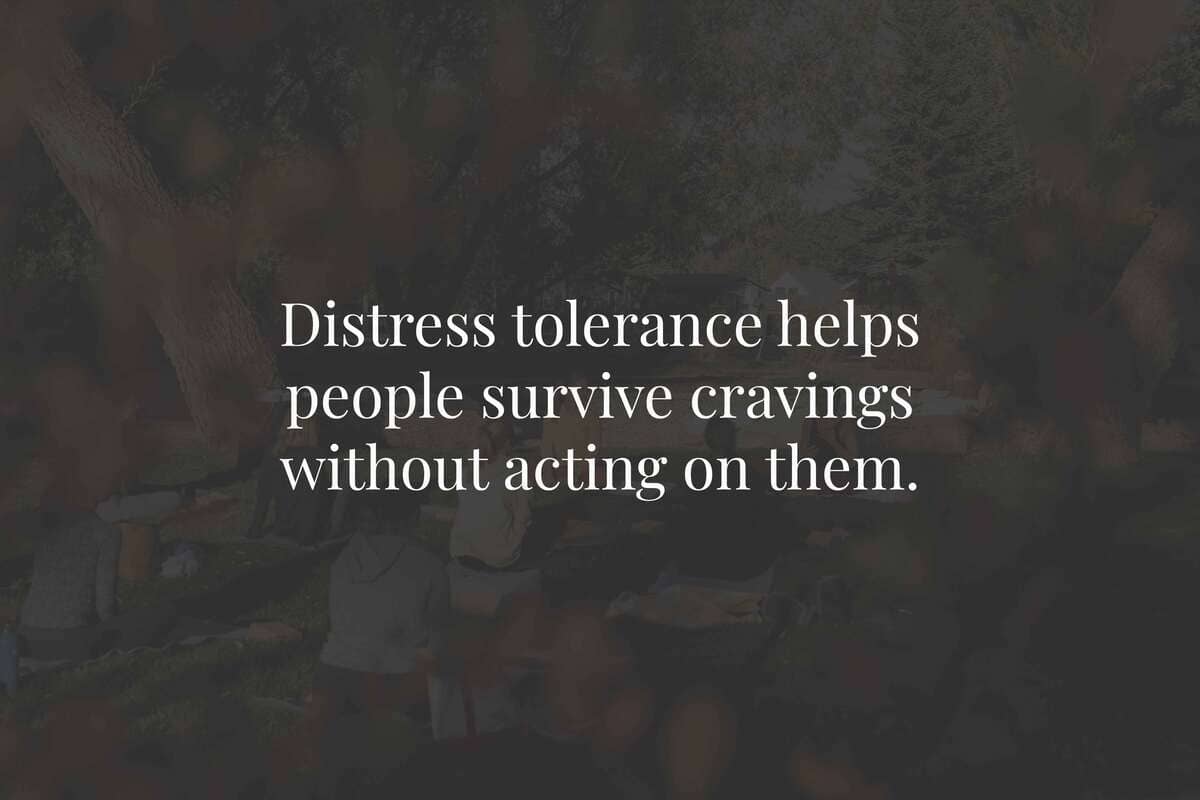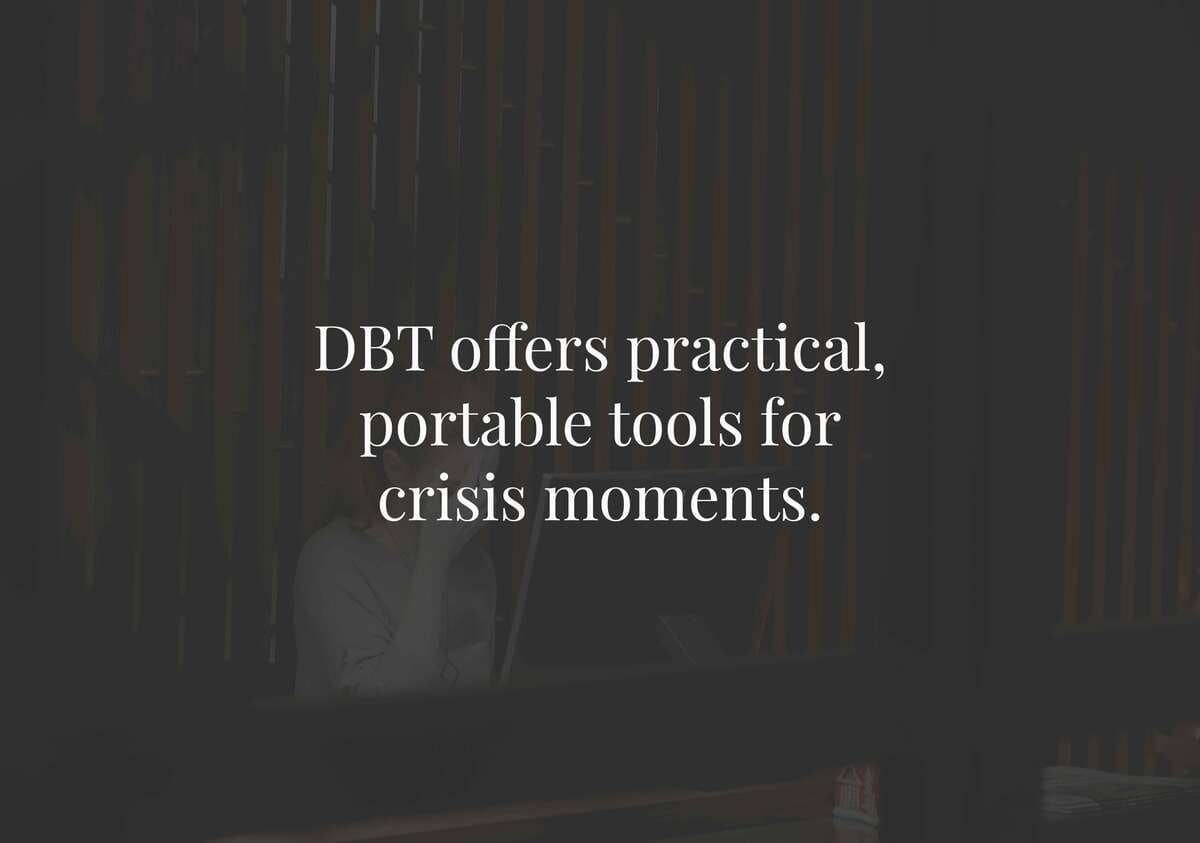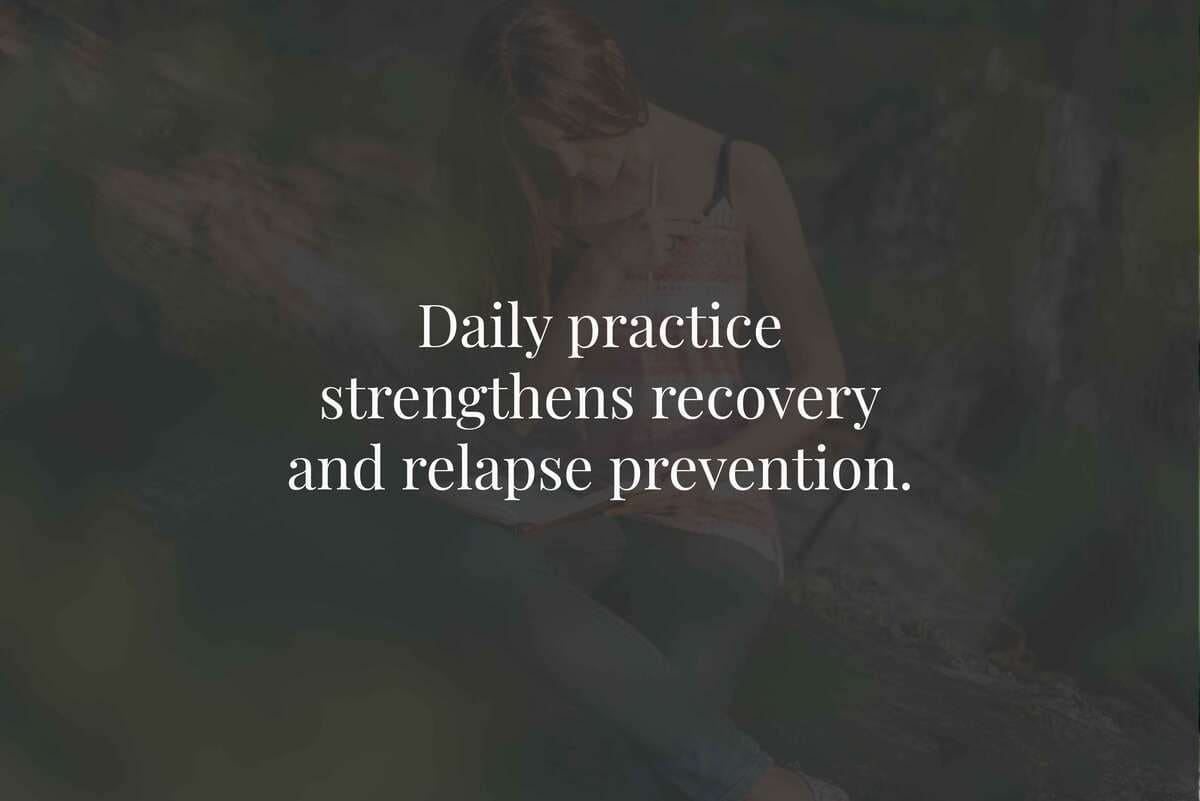DBT distress tolerance skills offer practical tools to survive moments of intense stress or cravings without making impulsive decisions. For individuals recovering from substance use disorders, these skills help manage the most difficult urges in early sobriety—when temptation feels strongest.
What Is Distress Tolerance in DBT?
Distress tolerance is one of the four core modules of Dialectical Behavior Therapy (DBT). Unlike skills that aim to change emotions or thoughts, distress tolerance focuses on enduring painful emotions without acting on them. The goal is not to feel better instantly—but to not make things worse.
These skills are especially helpful in crisis situations where emotions are overwhelming, but no immediate solution exists. For people in addiction recovery, that can include:
- Sudden cravings
- Unexpected emotional triggers
- Conflict with loved ones
- Anxiety around sobriety milestones

Core DBT Distress Tolerance Skills
The DBT distress tolerance toolbox includes dozens of techniques, but several are especially valuable for navigating recovery safely.
1. TIPP Skills
TIPP is an acronym for four fast-acting techniques to calm your nervous system:
- Temperature: Splash cold water on your face or hold an ice pack to trigger the dive reflex.
- Intense Exercise: Do jumping jacks or a brisk walk to discharge adrenaline.
- Paced Breathing: Inhale for 4 seconds, exhale for 6 seconds.
- Paired Muscle Relaxation: Tense and release muscle groups while exhaling slowly.
These are effective when cravings strike and the body enters fight-or-flight mode.

2. Distraction (ACCEPTS)
When emotions become overwhelming, the ACCEPTS framework offers a set of distractions:
- Activities: Hobbies, chores, or exercise
- Contributing: Helping others to shift your focus
- Comparisons: Remind yourself of past challenges you’ve overcome
- Emotions: Watch a funny video to evoke opposite emotions
- Pushing Away: Mentally shelve the issue for a moment
- Thoughts: Count backwards, do puzzles
- Sensations: Snap a rubber band, hold something cold
Distraction gives time for cravings to pass without relapse.
3. Self-Soothing
This involves using the five senses to comfort yourself. Examples:
- Sight: Look at calming nature scenes or photos
- Sound: Play soothing music or white noise
- Smell: Light a scented candle
- Taste: Sip tea or eat a favorite snack mindfully
- Touch: Wrap in a blanket or pet a dog
These small actions help create emotional safety when facing discomfort.
4. Radical Acceptance
Sometimes, pain cannot be avoided—only endured. Radical acceptance is the practice of fully acknowledging reality without resisting it. For example:
“I am feeling strong cravings right now. I don’t like it, but I accept it without judgment.”
This mindset shift reduces the suffering that comes from denial or resistance.
Why Distress Tolerance Is Vital in Addiction Recovery
Cravings are temporary, but the decisions made during cravings can have lasting consequences. DBT distress tolerance skills provide a reliable, portable set of tools to get through tough moments without giving in.
People recovering from substance use often feel shame, frustration, or guilt about their cravings. These skills offer a non-judgmental approach—acknowledging the discomfort while reinforcing personal strength.
Practicing Distress Tolerance Daily
To build mastery, it’s important to:
- Practice skills before a crisis hits
- Personalize your skill set (what works best for you?)
- Use daily logs to track triggers and successful skill use
Therapists often integrate distress tolerance into relapse prevention plans. Learn more about DBT and how it supports addiction recovery.

Other Tools That Reinforce Recovery
While distress tolerance helps in moments of acute stress, emotion regulation builds longer-term resilience. Understanding how to name, navigate, and reframe emotions can reduce future relapses.
For instance, the TIPP skill, featured in “DBT TIPP Skill: Fast Tools for Intense Emotions”, offers a step-by-step method when emotions peak suddenly—particularly helpful during panic or anxiety attacks.
For individuals interested in a full list of skills across all four DBT modules, “DBT Skills List: Which Skills Help Most in Recovery?” provides a structured overview and guidance on which skills to start with.
If you're deciding whether DBT is right for your needs, comparing it with other modalities in “CBT vs. DBT: Understanding the Key Differences” can offer helpful context.



